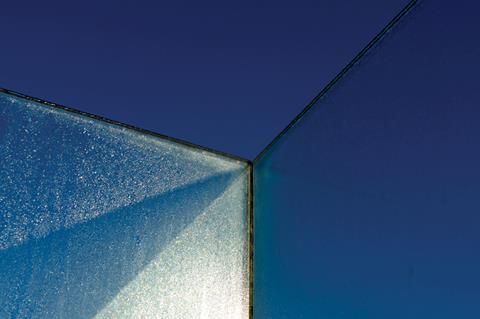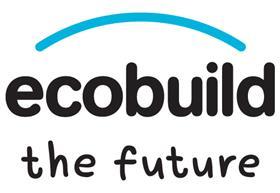Glass may have been about for thousands of years but in future its applications will extend well beyond glazing. Here are some innovative uses to look out for

Glass may be one of mankindŌĆÖs oldest building materials but it is also set to become one of the most innovative construction products of the future. Back in 1982 the film classic Blade Runner depicted a scene, set in 2019, where Harrison FordŌĆÖs character administers an advanced polygraph-style test in a room where the glass automatically darkens to provide privacy. Barely 30 years later, what was once firmly in the realms of science fiction is now reality.
In recent years there have been significant advancements in what is broadly referred to as smart glass technology. While some of these products - such as switchable glazing - are already available on the consumer market, laboratories and universities across the world are still developing new technology. Much of this research promises to extend future applications of glass beyond the traditional association with glazing or cladding products. Glass technology opens the prospect of a world where glass is configured for all manner of domestic lifestyle applications, as well as for cutting-edge energy-saving environmental uses.
Below are some examples of new glass products set to play a significant role in construction of the future.
Kinetic glass
Development stage: Research
Developed by New York-based The Living Architecture practice, kinetic - or ŌĆ£livingŌĆØ - glass ŌĆ£breathesŌĆØ. Embedded Dynalloy Flexinol wires in cast silicone within perforated glass panels cause holes to automatically expand or contract in response to electrical stimulus generated by people breathing in a room. The slits open and close like gills and the glass is consequently able to monitor CO2 levels and help regulate air quality. Inventors Soo-in Yang and David Benjamin claim that the research for their product began ŌĆ£with the premise that architectural elements might move in response to their environmentsŌĆØ. They also point out that their product is ŌĆ£thin, lightweight and transparent, with no motors or mechanical partsŌĆØ.
Coloured photovoltaic glass
Development stage: Available
Global glass manufacturer Onyx Solar has recently developed and patented semi-transparent photovoltaic glazing that can be coloured to virtually any shade while maintaining the same energy efficiency rates as standard solar panels. Solar panels have never been portrayed in terms of aesthetic benefit, and they are often thought of as plain ugly. The prospect of artistically coloured photovoltaic glazing that could be applied to balconies and skylights as well as the more standard rooftop assemblies could potentially revolutionise planning attitudes towards solar energy and transform the appearance of urban townscapes and roofscapes.
Electrochromic glass
Development stage: Research/ Available
Electochromic glass arguably offers the widest variety of current smart glass applications. It works by applying a low voltage electrical charge to composite glass panels comprised of five ultra-thin layers of electrodes, conductors, a separator as well as the glass itself. When the charge is applied the lithium ion atoms within the electrodes move which then alters the opacity or heat transmission property of the panel. As the voltage charge need not be consistently applied to maintain the altered state, merely to initially change it, electrochromic glass is also a low-energy smart glass solution.
Although the glass will never assume a completely solid form and will always maintain partial if only negligible visual transparency and light transmission, it can be modified to assume a wide variety of translucent states.
Electrochromic glass also provides considerable environmental benefits. In its darkened state it acts in a similar way to low-energy heat-reflective glass by reflecting back up to 98% of light, thereby forming an incredibly effective tool against solar heating and keeping associated air conditioning or mechanical ventilation costs down. Energy savings are also accrued by the fact that only a tiny electrical current is required to operate it.
The product does have drawbacks, however. It can be exorbitantly expensive (about 1,000m2) and the switching operation is not instant and can take several minutes to change from its darkened to fully transparent states. Nevertheless, as the technology develops, these constraints will doubtless be addressed. To date, electrochtromic glass has been used in office applications, such as around conference rooms, and has also been deployed to a lesser degree in domestic situations.
Liquid crystal glass
Development stage: Research/ Available
Polymer dispersed liquid crystal devices (PDLCs) are a cheaper variation on electrochromic glass. PDLC glass essentially acts as a composite capacitor with a thin layer of conductive material surrounded by a liquid mix of polymer and dissolved liquid crystals at its centre. This is sandwiched between two layers of glass or plastic.
When the liquid polymer mix is solidified, liquid crystals separate from the solid polymer and form individual droplets. The size and dispersal of these droplets ultimately determines the windowŌĆÖs ŌĆ£smartŌĆØ operating capabilities and are themselves regulated by the nature of the curing process. With no electrical charge the glass maintains a milky-white, translucent appearance caused by the random dispersal of liquid crystals on the droplets evenly scattering the light that passes through. When a small electrical charge is applied the liquid crystals congregate and align allowing more light to pass through, thus creating greater transparency. Like with electrochromic glass, PDLC has been used in conditions which require the application of privacy, such as conference rooms and bathroom/shower doors.
Ecobuild: The worldŌĆÖs biggest event for sustainable construction, design and the built environment

The Future Materials Gallery will feature at Ecobuild and future materials will be discussed in the conference and seminar programme
To register for Ecobuild go to TUES 5 - THURS 7 MARCH 2013



























No comments yet